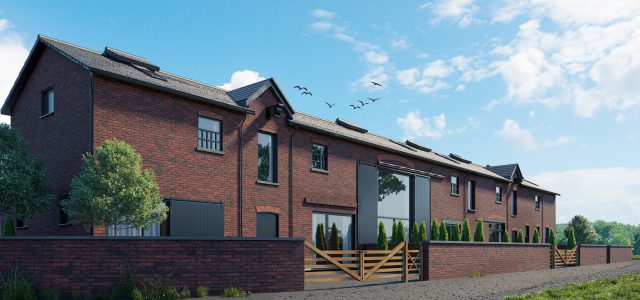
RE-IMAGINING BUILDINGS
Following on from the article last month about land and designing sites, many of Zara Moon Architects’ clients already have buildings that need to be re-designed to suit their requirements and some of the most unique properties are conversions of existing buildings
Whether you have purchased an interesting building which you want to convert into your dream home, or you could be a developer or building owner that would like to either convert yourself or sell with planning permission, you should consult a suitably qualified consultant / architect to assess the feasibility to maximise the development potential of your building.
In the same way that it is important to maximise a site, it is equally important to utilise the existing fabric of the building, and explore the constraints and opportunities to ensure the building can be re-designed to its full potential to suit its new use, whilst celebrating the building’s heritage.
Some of the projects at ZMA include a 22,000sq ft agricultural building conversion in Old Langho into eight luxury apartments, a mill conversion into a mixed-use development, numerous piggery and barn conversions located across the Ribble Valley into holiday-lets, Grade II listed building conversions and various commercial changes of use.
What you need to know about building conversions:
• Some change of use schemes do not require full planning permission, but they may need prior approval from the Local Authority and may fall within permitted development. Always ask your architect if planning approval is required as this is also dependent on location.
• Even if your project does not require planning permission, the conversion will still need Building Regulations approval.
• Your building and possibly the full ownership curtilage may be listed or a heritage asset. This can be checked by visiting Historic England.
• It may be feasible to extend as well as convert some buildings. However, this is dependent on the site location and other site constraints such as Green Belt, AONB or Conservation Areas, which can restrict the development to the existing building envelope.
• The external area will need to be adequate for your conversion to suit the specific use such as access, garden areas, bin storage and parking spaces.
• Your building needs to be structurally suitable for converting without having to significantly re-build and would require a structural survey to accompany the planning submission.
• Depending on the building’s previous use, the ground may be contaminated and will require a survey.
• Many conversions will require a bat, bird and barn owl survey. Further ecology surveys may also be required depending on the location, site and surrounding context. If any of the above are present, the construction phase will be restricted to certain months of the year, and you will also require a method statement and strategy of how to ensure the existing ecology will not be affected.
If you have a building which requires a re-design, change of use or conversion, then contact a member of the ZMA team for a free consultation where they will visit your site and discuss the feasibility of a conversion.
Next month: self-building
Zara Moon Architects
We Transform Sites, Buildings & Lives
13 New Market Street
Colne BB8 9BJ
01282 908440
info@zaramoonarchitects.co.uk
www.zaramoonarchitects.co.uk

